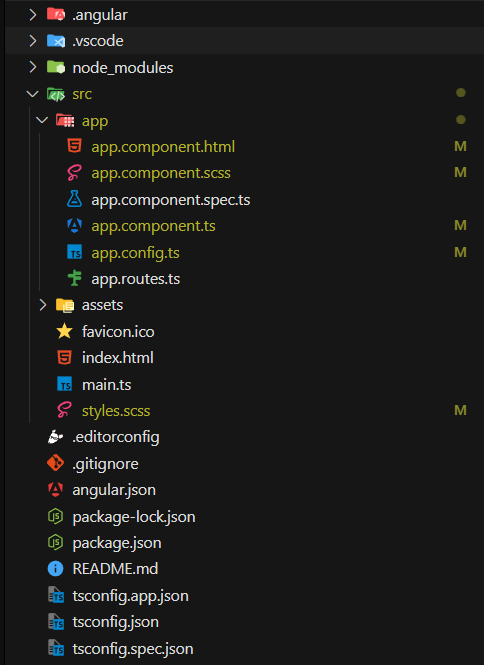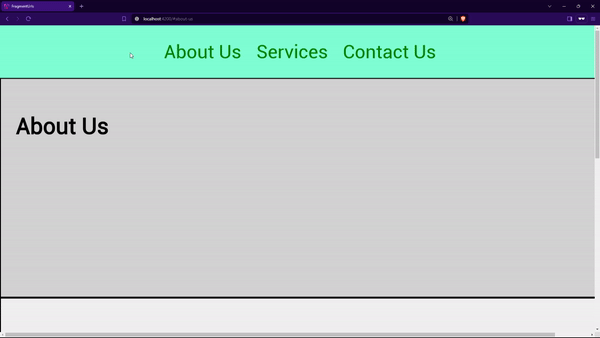|
Fragment navigation is important in Angular applications for creating deep linking and bookmarking functionality within a single-page application (SPA). It allows users to navigate directly to specific sections or components within a page without reloading the entire page, enhancing user experience and facilitating content sharing and navigation.
PrerequisitesWhat is a fragment URL?A fragment URL, also known as a fragment identifier or hash URL, is a URL that includes a fragment identifier preceded by a hash symbol (#). The fragment identifier refers to a specific section or element within a web page. In Angular applications, fragment URLs are commonly used for implementing client-side routing and navigation to specific sections or components within a single-page application.
Navigating to Fragment URLs in AngularAngular provides the Router service, which allows us to navigate between different views within our application. To navigate to a fragment URL, we can use the navigate method of the Router service and specify the desired fragment as part of the navigation options
Step 1: Create an angular applicationTo create a new angular application we can use,
ng new fragment-urls
cd fragment-urls This will create a new app in the directory fragment-urls, we then use the cd command to change the active directory.
Folder Structure Folder Structure Dependencies"dependencies": {
"@angular/animations": "^17.3.0",
"@angular/common": "^17.3.0",
"@angular/compiler": "^17.3.0",
"@angular/core": "^17.3.0",
"@angular/forms": "^17.3.0",
"@angular/platform-browser": "^17.3.0",
"@angular/platform-browser-dynamic": "^17.3.0",
"@angular/router": "^17.3.0",
"rxjs": "~7.8.0",
"tslib": "^2.3.0",
"zone.js": "~0.14.3"
}Step 2: Add fragment routesFragment URL just targets the element whose id is the same as that of the fragment, and scrolls to that element. We will create a nav bar with three hyperlinks and a section for each. We will provide a unique id for each of the sections and also the same in the fragment attribute for the button.
HTML
<!-- app.component.html -->
<nav>
<a routerLink="/" fragment="about-us">About Us</a>
<a routerLink="/" fragment="services">Services</a>
<a routerLink="/" fragment="contact-us">Contact Us</a>
</nav>
<section id="about-us">
<h1>
About Us
</h1>
</section>
<section id="services">
<h1>
Services
</h1>
</section>
<section id="contact-us">
<h1>
Contact Us
</h1>
</section>
/* app.component.scss */
nav {
width: 100vw;
height: 56px;
position: sticky;
top: 0;
display: flex;
gap: 16px;
justify-content: center;
align-items: center;
background-color: aquamarine;
color: green;
font-size: 20px;
a {
text-decoration: none;
color: inherit;
cursor: pointer;
&:hover {
color: red;
text-decoration: underline;
}
}
}
section {
width: 100vw;
height: 200px;
padding: 16px;
border: 1px solid black;
&:nth-of-type(odd) {
background-color: lightgray;
}
}
// app.component.ts
import { ViewportScroller } from '@angular/common';
import { Component } from '@angular/core';
import { RouterLink, RouterOutlet } from '@angular/router';
@Component({
selector: 'app-root',
standalone: true,
imports: [RouterOutlet, RouterLink],
templateUrl: './app.component.html',
styleUrl: './app.component.scss',
})
export class AppComponent {
title = 'fragment-urls';
constructor(viewport: ViewportScroller) {
viewport.setOffset([0, 56]);
}
}
// app.config.ts
import { ApplicationConfig } from '@angular/core';
import { provideRouter, withInMemoryScrolling } from '@angular/router';
import { routes } from './app.routes';
export const appConfig: ApplicationConfig = {
providers: [provideRouter(routes, withInMemoryScrolling({
anchorScrolling: 'enabled',
scrollPositionRestoration: 'enabled',
}))]
};
To start the application run the following commandng serve --open Output How to Navigate Fragment URL in Angular 15?
|


